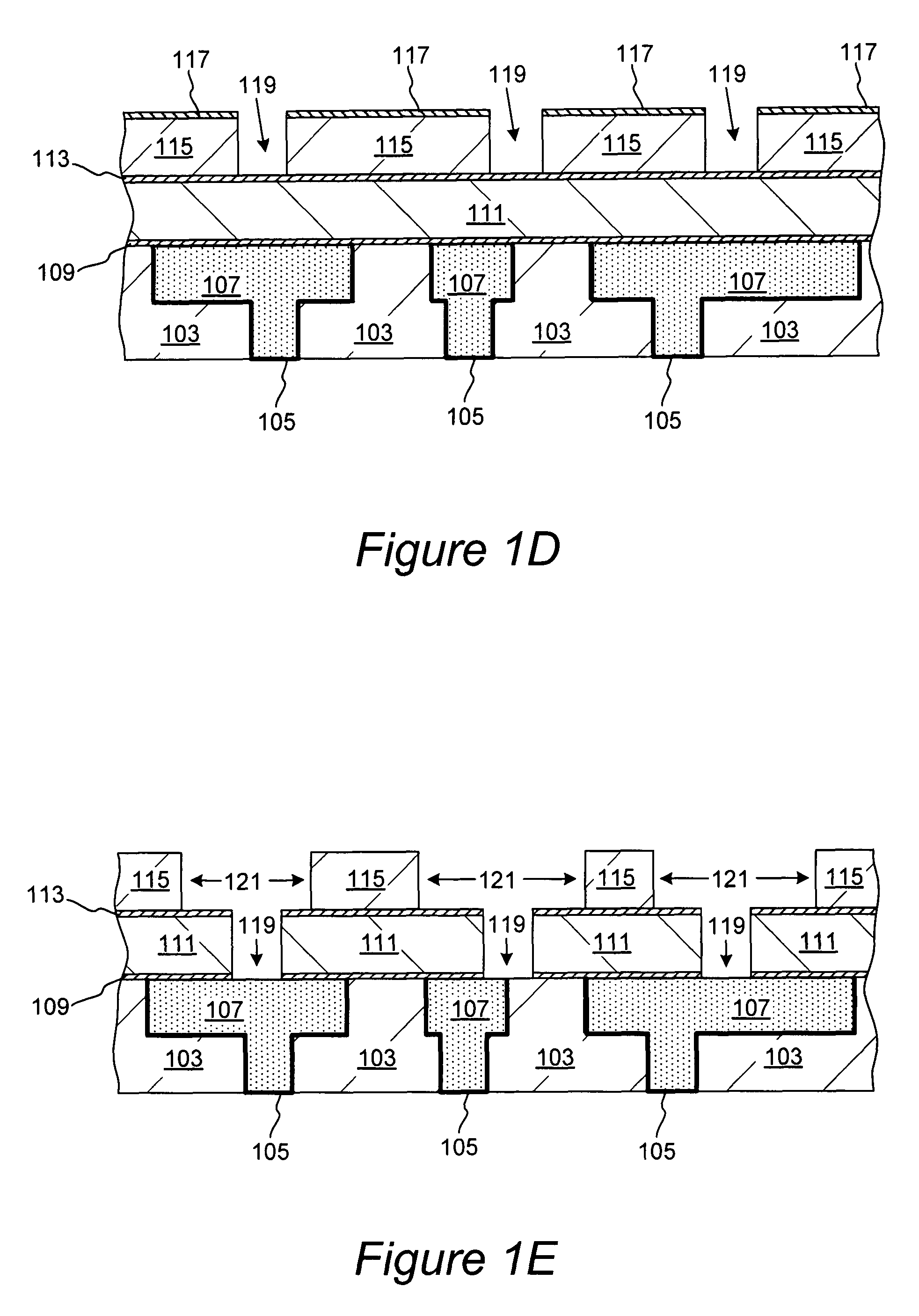Methods and apparatus for engineering an interface between a diffusion barrier layer and a seed layer
a diffusion barrier layer and seed layer technology, applied in the direction of vacuum evaporation coating, semiconductor/solid-state device details, coatings, etc., can solve the problems of unfavorable non-conform deposition of large amounts of seed layer material, formation of voids during electroplating, and formation of unacceptably large overhangs at feature openings. , to achieve the effect of improving stress and electromigration resistance, improving adhesion to the underlying barrier layer, and high stability
- Summary
- Abstract
- Description
- Claims
- Application Information
AI Technical Summary
Benefits of technology
Problems solved by technology
Method used
Image
Examples
Embodiment Construction
[0038]Thin and continuous copper seed layers can be formed on top of tantalum-containing diffusion barrier layers when agglomeration of copper is prevented with the use of an engineered interface between the two layers. The engineered interface includes an adhesion layer in which copper atoms are physically trapped such that they cannot easily migrate and agglomerate. The trapped copper atoms serve as the nucleation sites for the subsequently deposited copper-containing material.
[0039]Copper seed layer materials as used herein include copper and its alloys, such as CuAl, CuZn, CuMg, CuSn, CuMn, CuAg, CuB, and the like. Tantalum-containing diffusion barrier materials include, but are not limited to Ta, TaNx, TaSixNy, TaCxNy, and combinations thereof. In general, provided methods are particularly suitable for engineering an interface between materials which do not have strong chemical affinity towards each other. For example, in the case of copper and tantalum, affinity of copper to c...
PUM
| Property | Measurement | Unit |
|---|---|---|
| Fraction | aaaaa | aaaaa |
| Fraction | aaaaa | aaaaa |
| Fraction | aaaaa | aaaaa |
Abstract
Description
Claims
Application Information
 Login to View More
Login to View More - R&D
- Intellectual Property
- Life Sciences
- Materials
- Tech Scout
- Unparalleled Data Quality
- Higher Quality Content
- 60% Fewer Hallucinations
Browse by: Latest US Patents, China's latest patents, Technical Efficacy Thesaurus, Application Domain, Technology Topic, Popular Technical Reports.
© 2025 PatSnap. All rights reserved.Legal|Privacy policy|Modern Slavery Act Transparency Statement|Sitemap|About US| Contact US: help@patsnap.com



